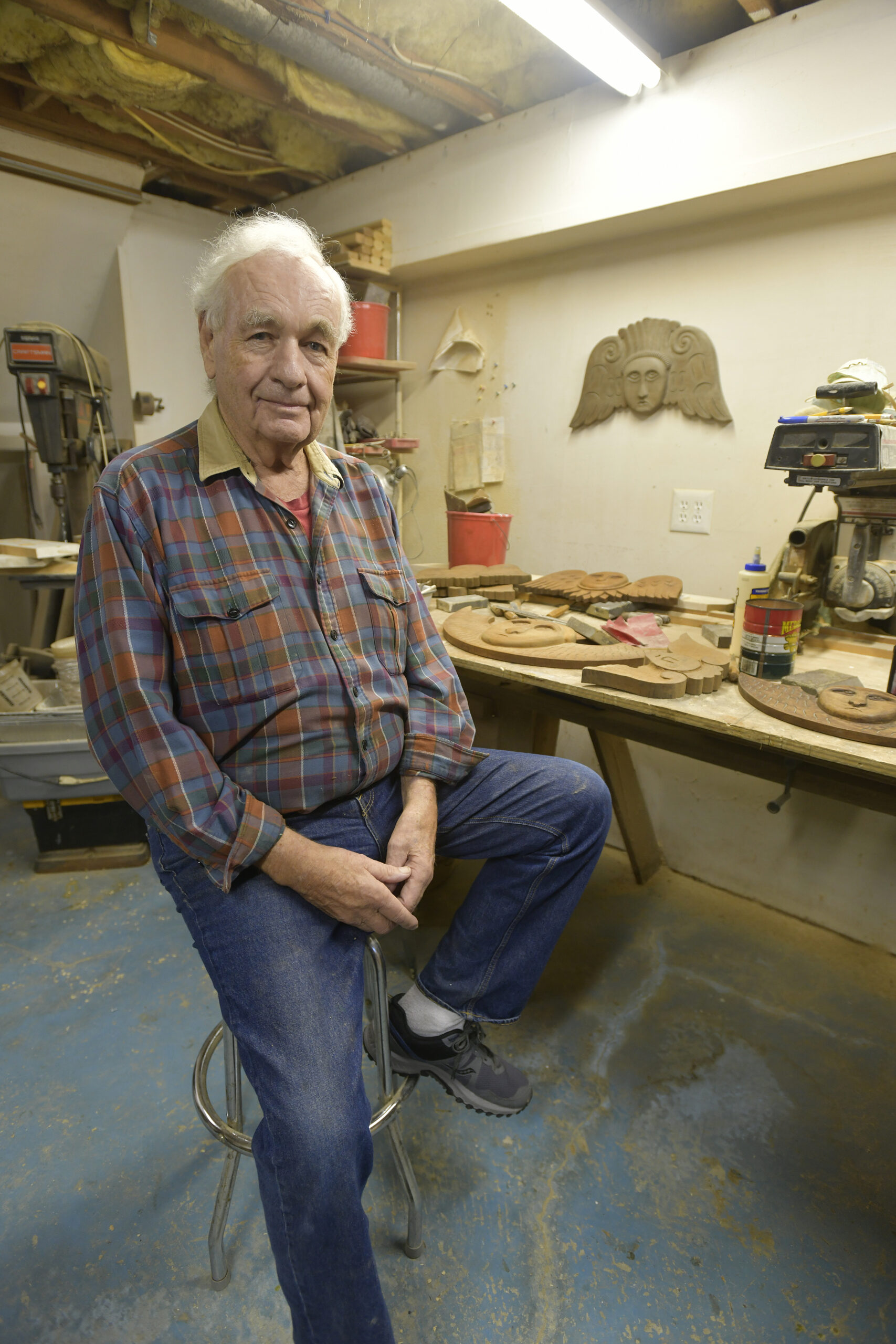
In the late 1800s and early 1900s, brownstone mined from quarries in Portland, Connecticut, played a key role in the construction of landmark buildings up and down the Eastern Seaboard.
But that wasn’t always the case.
It was the colonial settlers who discovered the fabled stone hundreds of years earlier, and the artists among them used it — producing some of the earliest displays of art in none other than 18th century graveyards.
Etched into gravestones, many of the carvings depicted angels — their faces expressive, wings spread wide — and, 40 years ago, they first caught the eye of David Cosgrove. Fascinated by their artistry, he decided to step back in time and honor them in his own way and through his own medium: wood.
“I started taking a good look at the artwork on the stones here, and I was just absolutely amazed with the imagination and skills they had,” Cosgrove, now 76, said of the carvers during a telephone interview from his home in Sag Harbor. “I said, ‘Let me delve into this a little bit more.’”
To date, the artist has recreated nearly four dozen colonial-era gravestone angels and faces, duplicating every swirl, curve and turn in Honduran mahogany with precision.
“There’s something inside you that flows out,” Cosgrove said. “Lucky enough, I do woodworking with other things, too, and if I want to make something, I can make it.”
In the early 1980s, the artist ran a wood shop in Wainscott, where he made yard signs, house numbers and various animal carvings — like chickens and ducks — for his clientele. Around that same time, he saw an article in the local newspaper about colonial gravestone rubbing and decided to try his hand at it.
“They were blurry,” he said with a laugh. “I brought them back to the shop and hung them on the wall, I looked at them and I said, ‘You know, maybe I’ll go down there with my sketchpad and try to sketch them,’ and so I did that.”
He also brought his camera and a new passion project was born. He soon visited all of the colonial cemeteries on the South and North forks, taking photos and making sketches as he went.
“I had all these drawings back in my shop there and I wondered if I could carve these things, you know?” he said. “And I ran right into a brick wall. They were that difficult. I was pretty much over my head. I said, ‘My God, these guys are good, really good.’”
Despite woodworking since childhood, he found that these particular carvings presented a unique set of challenges.
“It was really hard to put everything together. It was just so much going on with the carving,” he said. “They brought in a lot of what was going on around them. They had the water signs, they had a moon sign, the sun signs, and they had hearts on them and different things. It was really challenging to do the shapes and a lot of handwork, and trying to get it down as close as possible to the way they actually look on the stone.”
The first carvings were “very crude,” Cosgrove said, though he perfected his craft — mirroring the work done by the Connecticut River Valley carvers, who were among the earliest gravestone artists during colonial America. They represented all levels of skill, from beginners to “masterful,” he explained.
“I kept at it and kept at it, and got a little bit better and a little bit better, and I got them to the way they are today,” he said, adding, “As I went along with my art stuff, you follow different avenues in life, and the same thing with art. There’s avenues you can take and explore and open doors and see what’s on the other side — and that’s what I did. I wanted to see how far I could take it, and that was the exciting part of it.”
To this day, Cosgrove has not parted with any of his gravestone carvings. Each one represents between 30 and 40 hours of work, he said, and while some stand alone, others he has attached to glass — “mirror portals,” he calls them.
“I’ve had people want to buy them over the years, but I just kept them,” he said. “It’s part of me.”